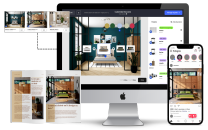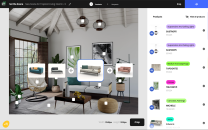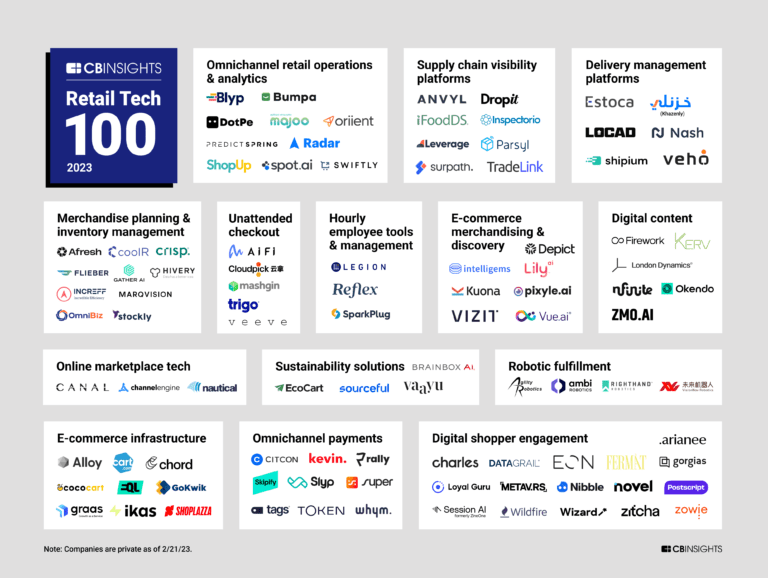
Nfinite
Founded Year
2017Stage
Series B | AliveTotal Raised
$142.24MLast Raised
$120M | 3 yrs agoMosaic Score The Mosaic Score is an algorithm that measures the overall financial health and market potential of private companies.
-113 points in the past 30 days
About Nfinite
Nfinite specializes in creating CGI-powered product visuals for the retail and e-commerce sectors. Its main offerings include scalable visual content creation using 3D CGI technology, which allows for the generation of photorealistic product imagery and interactive experiences without the need for traditional photoshoots. Nfinite primarily serves brands and retailers in the home furnishing, big-box retail, and consumer goods industries. Nfinite was formerly known as Hubstairs. It was founded in 2017 and is based in Bordeaux, France.
Loading...
Nfinite's Product Videos



Nfinite's Products & Differentiators
Packshot Creator
Create unlimited photorealistic images of each product from one 3D model
Loading...
Research containing Nfinite
Get data-driven expert analysis from the CB Insights Intelligence Unit.
CB Insights Intelligence Analysts have mentioned Nfinite in 1 CB Insights research brief, most recently on Mar 14, 2023.

Mar 14, 2023 report
Retail Tech 100: The most promising retail tech startups of 2023Expert Collections containing Nfinite
Expert Collections are analyst-curated lists that highlight the companies you need to know in the most important technology spaces.
Nfinite is included in 3 Expert Collections, including Real Estate Tech.
Real Estate Tech
2,490 items
Startups in the space cover the residential and commercial real estate space. Categories include buying, selling and investing in real estate (iBuyers, marketplaces, investment/crowdfunding platforms), and property management, insurance, mortgage, construction, and more.
Home Goods & Furniture
331 items
Tech-enabled companies offering services and products focused on furniture, home accessories, and interior design. This collection includes direct-to-consumer (D2C) startups, peer-to-peer (P2P) marketplaces, and 3D & AR/VR visualization tools, among others.
Retail Tech 100
100 items
The most promising B2B tech startups transforming the retail industry.
Latest Nfinite News
Oct 29, 2024
Table Of Contents Nfinite, a company he established in 2016 after encountering challenges while decorating his first apartment. Nfinite transforms the online shopping experience by offering retailers and brands AI-powered, immersive, engaging, and personalized visual content at scale. What inspired you to transition from law and financial services to founding Nfinite, a company focused on e-merchandising and spatial intelligence? My background in law and financial services provided me with valuable insights into business operations and market inefficiencies. However, I was drawn to the transformative potential of technology in the retail sector. I noticed that retailers faced significant challenges with traditional product photography—it was costly, time-consuming, and lacked scalability. This inspired me to found Nfinite, focusing initially on helping retailers by producing high-quality visuals using a mix of 3D modeling and AI. Over time, our expertise in generating large volumes of enriched 3D data led us to explore opportunities in spatial AI, collaborating with tech and AI companies to drive the next leap in artificial intelligence. As Nfinite evolved, we realized the potential to go beyond 2D imagery, moving toward creating vast, spatially enriched 3D datasets that will power the future of AI, enabling models to understand and generate not just pixels but entire environments. What gaps did you identify in the market that led to the creation of the company? When Nfinite was founded, e-commerce was expanding rapidly, but the tools for creating product visuals were lagging behind. Traditional photography couldn’t keep up with the demand for speed, customization, and flexibility. Retailers needed a way to produce and adapt visuals quickly, across multiple contexts, without sacrificing quality. Nfinite addressed this gap by using 3D modeling to generate photorealistic product visuals that were scalable and easy to customize. As we refined our methods, it became clear that these high-quality visuals weren’t just beneficial for retailers but could also serve broader AI applications, particularly in creating large, structured datasets for AI training. How does Nfinite leverage AI and spatial intelligence to create its extensive library of photorealistic 3D assets? Our journey began with producing 3D models tailored for retailers, leveraging a mix of 3D modeling and, more recently, AI to generate vast amounts of photorealistic content efficiently. Recently, we’ve expanded our capabilities by integrating spatial intelligence. While our retail clients benefit from some of this technology, such as our new SceneMagic AI feature, which generates photorealistic lifestyle imagery starting from simple 2D packshots, our investments and research in spatial AI are largely aimed at broader use cases. SceneMagic AI is a perfect example of our expertise in 3D, allowing us to create entire environments with precise proportions, lighting, shadows, and perspectives—a process we call 3D-controlled diffusion. In what ways do Nfinite’s AI-driven product visuals differ from traditional synthetic imagery? Our AI-driven visuals go beyond standard synthetic imagery by combining realism with flexibility. Traditional synthetic images often lack detail and customization potential, but our photorealistic 3D models offer high-quality, dynamic visuals that can be easily adapted for different contexts. Initially created for retailers, these models are now being enriched with spatial metadata, making them suitable for advanced AI applications like spatial intelligence. This versatility makes our assets unique, serving both commercial retail needs and cutting-edge AI development. Could you explain the role of human designers in your proprietary process of creating 3D visual assets? How important is the human touch in a tech-heavy solution? While our technology relies heavily on automation and AI, human designers play a critical role in ensuring that the final output meets our high standards of quality and creativity. Designers add the nuanced details that make our visuals truly photorealistic and aesthetically engaging. For retailers, this human touch ensures the visuals align with brand aesthetics and consumer expectations. As we move into the spatial AI space, our designers continue to ensure that even the most technically complex visuals are user-friendly and visually compelling. How are Nfinite’s 3D assets being used by retailers to enhance e-commerce, marketing, and in-store merchandising? Could you provide examples of successful use cases? Retailers use our 3D assets to create more immersive and interactive shopping experiences. For instance, a customer can change the color of a product or view it in different environments directly on the website. This customization has led to higher engagement and increased conversion rates. A notable example is our work with Lowe’s and Costco, where our photorealistic 3D models have helped reduce photography costs while enabling faster product updates and more flexible merchandising options across e-commerce platforms. How do Nfinite’s 3D datasets assist in AI model training for enterprise use cases? Our enriched 3D datasets, combined with spatial metadata, provide essential training data for AI models used in industries like augmented reality, robotics, and beyond. These datasets enable AI models to better understand and navigate three-dimensional environments, offering a foundation for applications in fields such as visual search, object recognition, and autonomous systems. The structured data we provide accelerates AI training and improves performance by allowing models to interact with detailed spatial environments. Spatial intelligence is a rapidly growing field. What are your thoughts on where this technology is heading, particularly in the context of AI advancements like Fei-Fei Li’s World Lab? Spatial intelligence will fundamentally change how AI systems understand and interact with the world. Innovations from initiatives like Fei-Fei Li’s World Lab indicate that AI will soon be able to grasp spatial relationships and contexts more deeply, enhancing its ability to create immersive digital experiences. Nfinite’s focus on creating enriched 3D datasets positions us well to contribute to this shift. Our expertise allows us to produce spatially aware data that will help train the next generation of AI models, making them more capable of interpreting complex, real-world environments. How do you see the evolution of AI in product visualization, especially as it relates to trends in synthetic data and spatial intelligence? AI is transforming product visualization from a static, one-dimensional process into something much more dynamic, interactive, and immersive. While we began by addressing retail’s need for dynamic product visuals, we now see broader opportunities thanks to the rise of spatial intelligence. We envision AI-driven visual experiences that allow consumers to interact with products in more personalized and immersive ways. In the near future, there is a strong likelihood that customers will experience tailor-made visual content depending on their specific needs and behaviors. Nfinite has secured significant funding and worked with major retailers. What are your next steps for growth, and how do you plan to scale the company in the coming years? Our immediate goal is to continue supporting our retail clients by refining and expanding our 3D visualization solutions. However, our long-term growth strategy lies in spatial AI. We are investing in building large datasets enriched with spatial metadata, partnering with tech companies to develop AI models that can understand and generate 3D environments. Scaling Nfinite will involve growing our team, investing in research and development, and building partnerships to drive innovation both in retail and AI applications. By doing so, we aim to be at the forefront of the spatial intelligence revolution. Thank you for the great interview, readers who wish to learn more should visit Nfinite .
Nfinite Frequently Asked Questions (FAQ)
When was Nfinite founded?
Nfinite was founded in 2017.
Where is Nfinite's headquarters?
Nfinite's headquarters is located at 9-13 rue Jean-Paul Alaux, Bordeaux.
What is Nfinite's latest funding round?
Nfinite's latest funding round is Series B.
How much did Nfinite raise?
Nfinite raised a total of $142.24M.
Who are the investors of Nfinite?
Investors of Nfinite include U.S. Venture Partners, Insight Partners, Pioneer Fund, Ikea Bootcamp, Celine Lazorthes and 9 more.
Who are Nfinite's competitors?
Competitors of Nfinite include VNTANA, Omi, Hypothetic, Naker, Threedium and 7 more.
What products does Nfinite offer?
Nfinite's products include Packshot Creator and 2 more.
Who are Nfinite's customers?
Customers of Nfinite include Conforama.
Loading...
Compare Nfinite to Competitors

Threekit specializes in visual commerce for brands and manufacturers. Its main offerings include a visual commerce platform that provides 3D product configuration, virtual photography, augmented reality, and AI-driven product recommendations to enhance online customer experiences. Threekit's solutions are primarily utilized by the manufacturing and retail sectors, particularly in complex goods markets. It was founded in 2005 and is based in Chicago, Illinois.

Emersya is a company that provides a 3D and AR platform for product design, visualization, and customization across various industries. The company offers tools for creating and managing 3D product experiences, including web-based augmented reality, 3D product customizers, configurators, and digital product creation services. Emersya's solutions serve brands and retailers looking to improve customer engagement and streamline product development. It was founded in 2012 and is based in Montpellier, France.

VNTANA provides three-dimensional (3D) digital asset management within the technology domain. The company offers a platform for managing, previewing, reviewing, and publishing 3D models for various applications in design, development, sales, and marketing. Its technology is utilized by brands, manufacturers, and technology platforms to deploy 3D content at scale. VNTANA was formerly known as Ventana 3D. It was founded in 2012 and is based in Sherman Oaks, California.
Cohoom is a company that specializes in interior design software, operating within the technology and design sectors. The company offers an all-in-one 3D design tool that allows users to create 3D visualizations of interior spaces, including floor plans and furniture arrangements, and render these designs in minutes. The primary customers of Cohoom are likely to be within the interior design and architecture industries. It was founded in 2018 and is based in New York, New York.

Cappasity specializes in immersive shopping experiences through interactive 3D, augmented reality (AR), and virtual reality (VR) technologies within the e-commerce sector. The company offers a platform for fast production, easy embedding, and detailed analysis of 3D content, aiming to enhance online retail by providing customers with in-store browsing experiences. Cappasity's solutions cater to a diverse range of industries, including fashion, automotive, and real estate, by enabling them to showcase products in 3D and AR. It was founded in 2013 and is based in Santa Clara, California.
Intiaro specializes in digital visualization and configuration tools. The company offers a range of services including three dimensional (3D) modeling, augmented reality, and visual marketing content. It aims to help furniture retailers and brands transition their products into the digital world. Intiaro primarily serves the furniture retail industry. It was founded in 2017 and is based in Greensboro, North Carolina.
Loading...